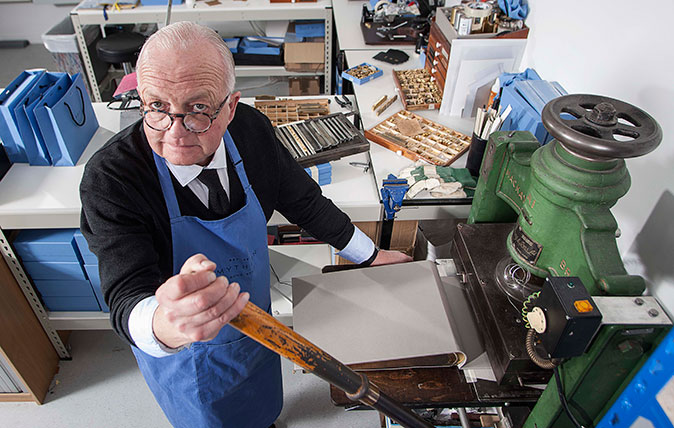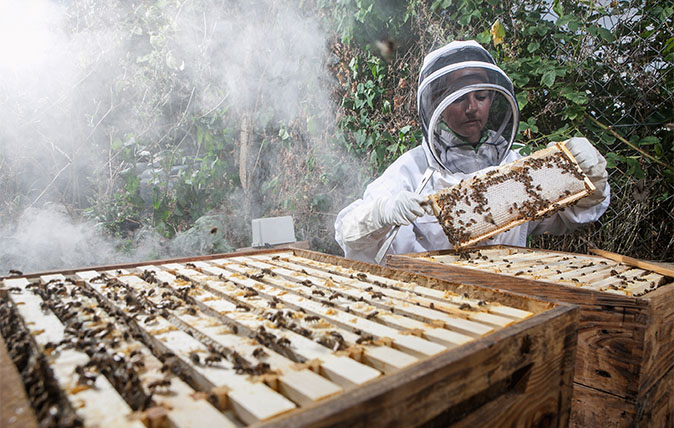The wool-spinner still using an 1899 loom and a method handed down for 230 years
Toby Tottle embraces the traditional process of textile production in Mainland Britain's only surviving district woollen mill.


Knockando Woolmill owes its longevity to its remote location above the River Spey, near Aberlour in Aberdeenshire. Mainland Britain’s only surviving district woollen mill has been producing textiles for more than 230 years and Toby Tottle, who came here as a craft fellow in 2016, has learnt skills that have been passed down through several generations.
He’s pictured here at the spinning mule – made in 1870, it’s the oldest in operation – which turns loose ‘rovings’ of wool into yarn by twisting and winding them onto spindles. ‘The trick is to get the right cone shape so that the yarn will come off nice and smoothly at the loom,’ explains Mr Tottle.
The mill embraces the entire traditional process of textile production, from carding scoured fleeces on a Victorian carding set to weaving blankets and kilting on a shuttle loom. Mr Tottle even does some dyeing using plants grown here, although this is mostly now done offsite, together with ‘raising’ (finishing) the woven cloth.
Reconfigured in the 19th century, the mill complex includes the waterwheel that powered its machinery, an 18th-century cottage (now a museum), the miller’s house (now an office/design studio), the original shop and a byre converted to a cafe and shop. It opened to the public in 2012.
The Knockando Woolmill Trust, established in 2000, has restored the A-listed buildings and some machinery and is now fundraising to sustain the whole site, repair the 1899 Dobcross loom and take on another craft fellow to whom Mr Tottle can pass on his skills.
For more information about Knockando Woolmill, visit www.kwc.co.uk.

The gold stamper: ‘The younger generation is very appreciative of artisan work – they’re the ones driving the trend’
This week's Living National Treasure is John Timms, the man who leads the team that stamps gold lettering into thousands
Exquisite houses, the beauty of Nature, and how to get the most from your life, straight to your inbox.

The neon sign maker: 'Piccadilly Circus was our answer to Vegas – now it's all pixellated screens'
This week's Living National Treasure is Marcus Bracey, the man behind the neon signs that light up our cities. He

The beekeeper: 'There are few things better than a full comb of capped liquid gold'
Mary Miers is a hugely experienced writer on art and architecture, and a former Fine Arts Editor of Country Life. Mary joined the team after running Scotland’s Buildings at Risk Register. She lived in 15 different homes across several countries while she was growing up, and for a while commuted to London from Scotland each week. She is also the author of seven books.
